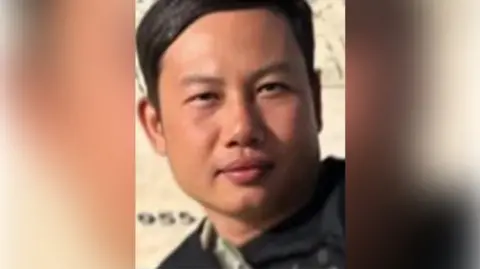The ongoing conflict within Gaza continues to unfold with profound humanitarian implications. Recently, the Israeli government reported the recovery of the body of a Thai national named Nattapong Pinta, who was taken hostage during a Hamas-led attack in October 2023. The announcement was made by Israel’s Defense Minister, Israel Katz, confirming that Pinta’s remains were retrieved during a special military operation in the Rafah area, located in the southern part of Gaza.
Nattapong Pinta, a 35-year-old agricultural laborer, was captured while working at Kibbutz Nir Oz in southern Israel. According to military officials, there is a stark possibility that he was killed shortly after his abduction. Prior to this recovery, there was uncertainty regarding his fate, with questions lingering about whether he was alive or deceased.
The body’s recovery resonates deeply given the context of Pinta’s captivity. He is described as a married father with a young son, who was striving to support his family back in Thailand. The circumstances surrounding his kidnapping involved a militant group known as the Mujahideen Brigades, which taken him during a time of heightened conflict. The Israeli Defense Forces indicated that the operation to recover Pinta’s body was significantly informed by intelligence obtained through the interrogation of a captured terrorist.
Upon hearing the news of her husband’s body being found, Pinta’s wife responded with a poignant image of their son crying, emphasizing the emotional toll this situation has taken on the family. This incident is part of a larger narrative wherein the Hostages and Missing Families Forum highlighted the extended period of anguish experienced by families of the missing, referring to “20 terrible and agonising months of devastating uncertainty.”
Interestingly, Pinta is believed to be the last remaining Thai hostage from the events of October 7, 2023. Prior to this, five other Thai nationals had been released during a ceasefire earlier in the year, all of whom returned alive. The Israeli military also recently reported the recovery of the bodies of Judy and Gadi Haggai, an elderly couple killed at the same kibbutz. Their remains were likewise in the possession of the Mujahideen Brigades.
In addition to these developments, another tragic incident unfolded at a US-backed aid distribution center in southern Gaza, where six Palestinians lost their lives due to Israeli gunfire during a food supply distribution. This violent occurrence underscores the difficulties faced by civilians in the ongoing conflict, with multiple reports suggesting that numerous Palestinians were injured, and the humanitarian situation continues to deteriorate.
As the Israeli military initiated limited aid into Gaza after a prolonged blockade, the challenges of distributing relief to those in need remain stark. Amidst this situation, a coalition known as the Gaza Humanitarian Foundation has paused its operations to reassess the safety of its aid distribution process due to overcrowding. The humanitarian crisis extends beyond the combat zones, affecting the daily lives of many civilians seeking assistance.
The extent of the violence is staggering, with approximately 54,677 people reported killed in Gaza since the onset of the war, an aftermath of the significant military response launched by Israel following the October attack in which around 1,200 people died, and many were taken hostage. It is alarming to note that, among the individuals captured on that fateful day, around 54 remain in captivity. The Israeli military has reported that of these captives, 31 are confirmed dead.
Thus, the recovery of Nattapong Pinta’s body serves not only as a tragic conclusion to one family’s prolonged anguish but also highlights the broader implications of the ongoing Israeli-Palestinian conflict. The situation remains fluid, and with continued military actions, the need for humanitarian solutions is increasingly urgent. Families await news of their loved ones, and advocates push for negotiations with groups like Hamas to secure the freedom of those still held captive. The landscape of mourning and uncertainty illustrates the profound human cost of war – a story that continues to unfold in the region.



